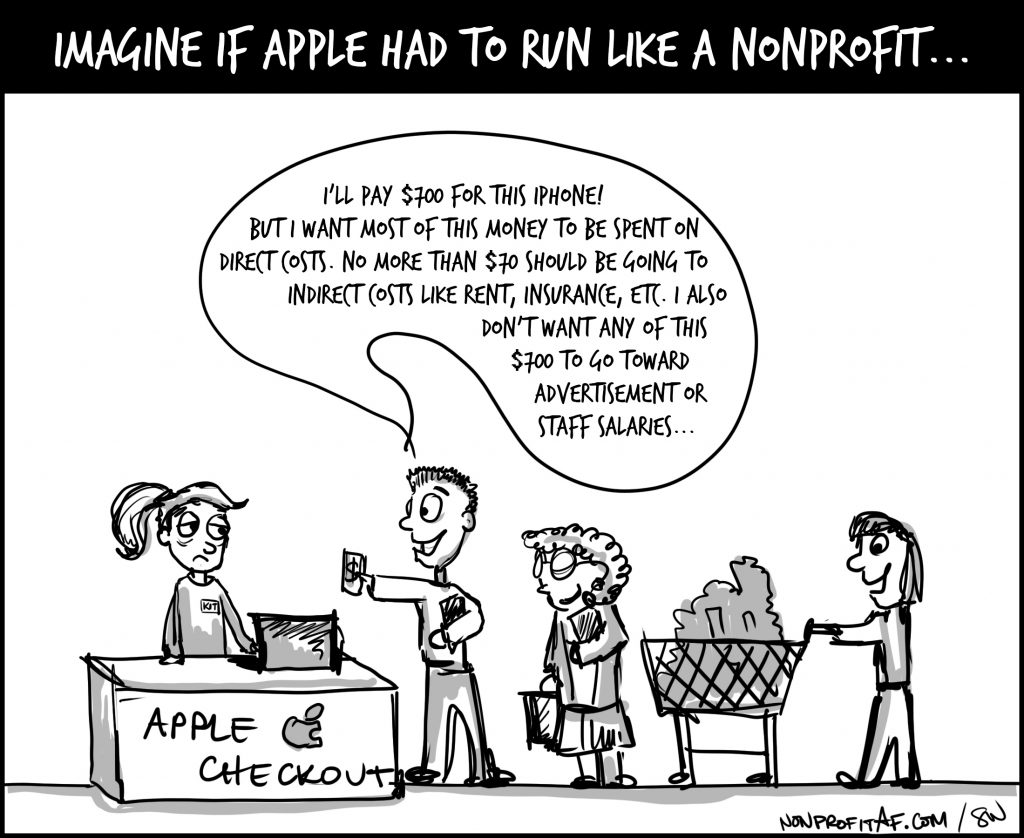
We nonprofits deal with unique challenges that our for-profit colleagues never have to think about. If you ever sat in the dark for hours listening to REM and eating Otter Pops and wondering what it would like for a large for-profit like Apple to have to run like a nonprofit, wonder no more! I’ve done it for you this week! (What, like your vacation is so much more interesting). And I asked NAF’s web designer and artist, Stacy Nguyen, to draw up some comics.
At the retail store
Customer: Hi, I’d like to buy this latest iPhone. How much is it?
Apple employee: $700 dollars.
Customer: Here you go. But I want most of this money to be spent on direct costs. No more than $70 should be going to indirect costs like rent, insurance, etc. I also don’t want any of this $700 to go toward advertisement or staff salaries.
Apple employee: We’ll designate these restrictions in our systems.
Customer: At the end of the year, I’d like a report on what you spent this money on.
Apple employee: We provide quarterly financial reports, and would be glad—
Customer: No no no. I don’t want the financial reports on your entire company. I only want a report on what my $700 specifically was spent on. Only my $700.
Apple employee: OK…Would you like to be added to our e-newsletter list? Continue reading “Imagine if Apple had to run like a nonprofit”




